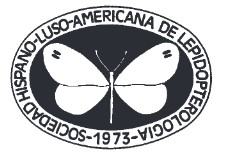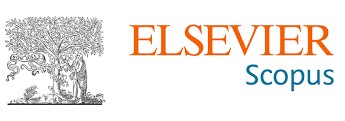Identificación molecular de algunos Lepidoptera inmaduros causantes de la defoliación de Quercus L., en la provincia de Lorestán, oeste de Irán (Insecta: Lepidoptera)
DOI:
https://doi.org/10.57065/shilap.787Palabras clave:
Insecta, Lepidoptera, Daño, Quercus brantii, secuenciación, código de barras COI, árbol filogenético, IránResumen
Quercus L., dominan casi el 40% de la superficie forestal de Irán. El segundo grupo destructivo de insectos son los Lepidoptera defoliadores distribuidos en los bosques de Zagros de Irán. Hemos evaluado las comunidades de lepidópteros en los ecosistemas de los bosques de Zagros en la provincia de Lorestan, al oeste de Irán, durante un periodo de unos 2 años que coincidió con los brotes de defoliación experimentados en esta zona. Se recogieron 500 larvas de lepidópteros que se alimentaban de hojas de Quercus. La relación filogenética de los Lepidoptera se analizó mediante el programa informático BEAST, basado en el método de la inferencia bayesiana. En total, se identificaron 14 taxones de Lepidoptera a partir de las secuencias de ADN de sus estadios inmaduros. Mediante BLASTn se identificaron seis géneros y ocho especies. Aquí desarrollamos un enfoque basado en el código de
barras COI para la delimitación de especies de Lepidoptera.
Descargas
Estadísticas globales ℹ️
|
599
Visualizaciones
|
343
Descargas
|
|
942
Total
|
|
Citas
Abai, M. (2009). Pests of forest trees & shrubs of Iran. Ministry of Agriculture, Agricultural research, Education & Extension organization.
Attarod, P., Sadeghi, S. M. M., Sarteshnizi, F. T., Saroyi, S., Abbasian, P., Masihpoor, M., Kordrostami, F., & Dirikvandi, A. (2016). Meteorological parameters and evapotranspiration affecting the Zagros forests decline in Lorestan province. Iranian Journal of Forest and Range Protection Research, 13, 97-112. [In Persian].
Barimani Varandi, H., Babaee, M. R., & Vatandost, A. (2006). Some biological notes on Ennomos quercinaria (Lep.: Geometridae) in Mazandaran. Iranian Journal of Forest and Range Protection Research, 4, 71-79. [In Persian].
Beiranvand, A., Attarrod, P., Tavakoli, M., & Marvi Mohajer, M. (2015). Zagros forest ecosystem decline, causes, consequences, and remedies. Forest and Rangeland Journal, 106, 18-30. [In Persian].
Bouckaert, R., Heled, J., Kühnert, D., Vaughan, T., Wu, C.-H., Xie, D., Suchard, M. A., Rambaut, A., & Drummond, A. J. (2014). BEAST 2: a software platform for Bayesian evolutionary analysis. PLoS computational biology, 10, e1003537. https://doi.org/https://dx.doi.org/10.1371%2Fjournal.pcbi.1003537 DOI: https://doi.org/10.1371/journal.pcbi.1003537
Ciesla, W. (2011). Forest entomology: a global perspective. John Wiley & Sons. DOI: https://doi.org/10.1002/9781444397895
Csóka, G., & Kovács, T. (1999). Xylophagous insects. Hungarian Forest Research Institute.
Domingue, M. J., Csóka, G., Tóth, M., Vétek, G., Pénzes, B., Mastro, V., & Baker, T. C. (2011). Field observations of visual attraction of three European oak buprestid beetles toward conspecific and heterospecific models. Entomologia experimentalis et applicata, 140, 112-121. DOI: https://doi.org/10.1111/j.1570-7458.2011.01139.x
Doyle, J. J., & Doyle, J. L. (1987). A rapid DNA isolation procedure for small quantities of fresh leaf tissue. Phytochemical Bulletin, 19, 11-15.
Eshleman, K. N., Morgan, R. P., Webb, J. R., Deviney, F. A., & Galloway, J. N. (1998). Temporal patterns of nitrogen leakage from mid-Appalachian forested watersheds: Role of insect defoliation. Water Resources Research, 34, 2005-2016. DOI: https://doi.org/10.1029/98WR01198
Gil-Pelegrín, E., Peguero-Pina, J. J., & Sancho-Knapik, D. (2017). Oaks and people: a long journey together. In E. Gil-Pelegrín, J. J. Peguero-Pina, & D. Sancho-Knapik (Eds.), Oaks physiological ecology, exploring the functional diversity of genus Quercus L. (pp. 1-11). Springer. DOI: https://doi.org/10.1007/978-3-319-69099-5_1
Glavendekiæ, M. M., & Medareviæ, M. (2010). Insect defoliators and their influence on oak forests in the Djerdap National Park, Serbia. Archives of Biological Sciences, 62, 1137-1141. DOI: https://doi.org/10.2298/ABS1004137G
Gouy, M., Guindon, S., & Gascuel, O. (2010). SeaView version 4: a multiplatform graphical user interface for sequence alignment and phylogenetic tree building. Molecular Biology and Evolution, 27, 221-224. https://doi.org/10.1093/molbev/msp259 DOI: https://doi.org/10.1093/molbev/msp259
Hajizadeh, G., Jalilvand, H., Kavosi, M. R., & Barimani Varandi, H. (2016). Relationship between insect herbivory and environmental variables in forests of northern Iran. Nusantara Bioscience, 8, 155-160. DOI: https://doi.org/10.13057/nusbiosci/n080205
Jafarzadeh, A. A., Mahdavi, A., Fallah Shamsi, S. R., & Yousefpour, R. (2020). Economic evaluation of some of the most important ecosystem services in Zagros forests. Environmental Sciences, 18, 137-150. [In Persian]. DOI: https://doi.org/10.29252/envs.18.1.137
Jalili, A. (2022). Leucoma wiltshirei Coll and sustainable management of Zagros. Iran Nature, 7, 3-3. [In Persian].
Jazirehi, M. H., & Ebrahimi Rostaghi, M. (2003). Silviculture in Zagros. University of Tehran Press.
Kalapanida, M., & Petrakis, P. V. (2012). Temporal partitioning in an assemblage of insect defoliators feeding on oak on a Mediterranean mountain. European Journal of Entomology, 109, 55-69. DOI: https://doi.org/10.14411/eje.2012.008
Kavosi, M. R. (2007). Hyphantria cunea in Mazandaran and Ardabil Provinces. Plant Protection Extension [formerly Plant Pathologist & Food], 1, 53. [In Persian].
Kavosi, M. R., & Gninenko, Y. I. (2007). Hyphantria cunea in Mazandaran and Ardabil Provinces. Plant Protection Extension [formerly Plant Pathologist & Food], 1, 52. [In Persian].
Kiadaliri, H., Ostovan, H., Abaei, M., & Ahangaran, Y. (2005). Investigation on the behaviour treat of leaf feeder moth (Erannis defoliaria clerck) and natural enemies in forests of the in west of Mazandaran province. Journal of Agricultural Sciences (Islamic Azad University), 11, 145-159. [In Persian].
Kravchenko, V. D., Fibiger, M., Hausmann, A., & Müller, G. C. (2007). The Lepidoptera of Israel, Noctuidae (Vol. 2). Pensoft Publishers.
Kulman, H. (1971). Effects of insect defoliation on growth and mortality of trees. Annual Review of Entomology, 16, 289-324. DOI: https://doi.org/10.1146/annurev.en.16.010171.001445
Kumar, S., Stecher, G., & Tamura, K. (2016). MEGA7: molecular evolutionary genetics analysis version 7.0 for bigger datasets. Molecular Biology and Evolution, 33, 1870-1874. https://doi.org/10.1093/molbev/msw054 DOI: https://doi.org/10.1093/molbev/msw054
Marquis, R. J., Passoa, S. C., Lill, J. T., Whiteld, J. B., Le Cor, J., Forkner, R. E., & Passoa, V. A. (2019). Illustrated guide to the immature Lepidoptera on oaks in Missouri. Forest Health Assessment & Applied Sciences Team.
McCullough, D. G., Werner, R. A., & Neumann, D. (1998). Fire and insects in northern and boreal forest ecosystems of North America. Annual Review of Entomology, 43, 107-127. DOI: https://doi.org/10.1146/annurev.ento.43.1.107
Mirzayans, H., & Abai, M. (1974). The oak trees lepidoptera in Iran. Journal of Entomological Society of Iran, 1, 109-126.
Mohammadian, H. (2005). Biological diversity of Lepidoptera in Iran (geographic distribution of 2200 species). Sepehr Publication Center.
Netherer, S., & Schopf, A. (2010). Potential effects of climate change on insect herbivores in European forests-General aspects and the pine processionary moth as specific example. Forest Ecology and Management, 259, 831-838. DOI: https://doi.org/10.1016/j.foreco.2009.07.034
Rahmani, A., Pourhashemi, M., Bordbar, K., Jahanbazi, H., Matinizadeh, M., Iranmanesh, Y., & Tavakoli, M. (2022). Zagros forests monitoring, measures and preliminary results. Iran Nature, 7, 87-105. [In Persian].
Ravan, B., Esfandiari, M., Mossadegh, M. S., & Rabieh, M. M. (2016). Introducing some moths of Noctuinae (Lep.: Noctuidae) from southern areas of Zagros in Khuzestan and Fars provinces. Iranian Journal of Forests and Rangelands Protection Research, 13, 113-131. [In Persian].
Reynolds, B. C., Hunter, M. D., & Crossley Jr, D. (2000). Effects of canopy herbivory on nutrient cycling in a northern hardwood forest in western North Carolina. Selbyana, 21, 74-78.
Rouault, G., Candau, J.-N., Lieutier, F., Nageleisen, L.-M., Martin, J.-C., & Warzée, N. (2006). Effects of drought and heat on forest insect populations in relation to the 2003 drought in Western Europe. Annals of Forest Science, 63, 613-624. DOI: https://doi.org/10.1051/forest:2006044
Sagheb-Talebi, K., Pourhashemi, M., & Sajedi, T. (2014). Forests of Iran: a treasure from the past, a hope for the future. Springer. DOI: https://doi.org/10.1007/978-94-007-7371-4
Shahreyari-Nejad, S., Esfandiari, M., Rasekh, A., Mossadegh, M., & Shirvani, A. (2018). New records of Noctuinae for Iran with additional distribution data (Lepidoptera: Noctuidae). SHILAP Revista de lepidopterología, 46, 145-155.
Simmons, M. J., Lee, T. D., Ducey, M. J., Elkinton, J. S., Boettner, G. H., & Dodds, K. J. (2014). Effects of invasive winter moth defoliation on tree radial growth in eastern Massachusetts, USA. Insects, 5, 301-318. DOI: https://doi.org/10.3390/insects5020301
Swank, W. T., Waide, J., Crossley, D., & Todd, R. (1981). Insect defoliation enhances nitrate export from forest ecosystems. Oecologia, 51, 297-299. DOI: https://doi.org/10.1007/BF00540897
Tavakoli, M., Hosseini-Chegeni, A., & Khaghaninia, S. (2017). The first report of outbreak and identification of the larvae of oak defoliator wasp, Periclista sp. (Hymenoptera: Tenthredinidae) using COI gene from Iran. Iranian Journal of Forest and Range Protection Research, 15, 203-209. [In Persian].
Tavakoli, M., Hosseini-Chegeni, A., & Khaghaninia, S. (2018). The first report of gypsy moth, Lymantria dispar (Lepidoptera: Lymantriidae) outbreak from Northern Zagros forests and its identification using COI gene in Iran. Iranian Journal of Forest and Range Protection Research, 16, 207-218. [In Persian].
Tavakoli, M., Hosseini-Chegeni, A., & Khaghaninia, S. (2019). The outbreak report of ash defoliator sawfly, Tomostethus sp. outbreak (Hymenoptera: Tenthredinidae) from Iran. Forest Research and Development, 5, 317-328. [In Persian].
Tavakoli, M., Khaghaninia, S., Melika, G., Stone, G. N., & Hosseini-Chegeni, A. (2019). Molecular identification of Andricus species (Hymenoptera: Cynipidae) inducing various oak galls in Central Zagros of Iran. Mitochondrial DNA Part A, 30, 713-720. DOI: https://doi.org/10.1080/24701394.2019.1622693
Torun, Ö., & Çaliºkan, S. S. (2016). Caterpillar (Lepidoptera) communities on oak (Quercus pubescens) in Ankara province (Turkey). Türkiye Entomoloji Dergisi, 40, 281-290. DOI: https://doi.org/10.16970/ted.88652
Webb, J., Cosby, B., Deviney, F., Eshleman, K., & Galloway, J. (1995). Change in the acid-base status of an Appalachian mountain catchment following forest defoliation by the gypsy moth. Water, Air, and Soil Pollution, 85, 535-540. DOI: https://doi.org/10.1007/BF00476884
Publicado
Cómo citar
Número
Sección
Licencia

Esta obra está bajo una licencia internacional Creative Commons Atribución 4.0.
El autor retiene sus derechos de marca y patente sobre cualquier proceso o procedimiento dentro del artículo.
El autor retiene el derecho de compartir, distribuir, ejecutar y comunicar públicamente el artículo publicado en SHILAP Revista de lepidopterología, con reconocimiento inicial de su publicación en SHILAP Revista de lepidopterología.
El autor retiene el derecho para hacer una posterior publicación de su trabajo, de utilizar el artículo a publicarlo en un libro, siempre que indique su publicación inicial en SHILAP Revista de lepidopterología.
Cada envío a SHILAP Revista de lepidopterología debe ir acompañado de una aceptación de los derechos de autor y del reconocimiento de autoría. Al aceptarlos, los autores conservan los derechos de autor de su trabajo y aceptan que el artículo, si es aceptado para su publicación por SHILAP Revista de lepidopterología, tendrá una licencia de uso y distribución “Reconocimiento 4.0 Internacional de Creative Commons” (CC BY 4.0), que permite a terceros compartir y adaptar el contenido para cualquier propósito dando el crédito apropiado al trabajo original.
Puede consultar desde aquí la versión informativa y el texto legal de la licencia. La indicación de la licencia CC BY 4.0 debe indicarse expresamente de esta manera cuando sea necesario.
A partir de 2022, el contenido de la versión impresa y digital se encuentra bajo una licencia de uso y distribución “Reconocimiento 4.0 Internacional de Creative Commons” (CC BY 4.0), que permite a terceros compartir y adaptar el contenido para cualquier propósito dando el crédito apropiado al trabajo original.
El contenido anterior de la revista se publicó bajo una licencia tradicional de derechos de autor; sin embargo, el archivo está disponible para acceso gratuito.
Al usar el contenido de SHILAP Revista de lepidopterología publicado antes del año 2022, incluidas figuras, tablas o cualquier otro material en formato impreso o electrónico pertenecen a los autores de los artículos, los autores deben obtener el permiso del titular de los derechos de autor. Las responsabilidades legales, financieras y penales a este respecto pertenecen al autor(es).
En aplicación del Principio de Prioridad del Código Internacional de Nomenclatura Zoologica, no se autoriza el depósito en repositorios, páginas web personales o similares de cualquier otra versión distinta a la publicada por el editor.




























